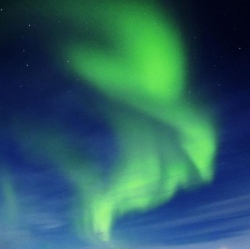
Three Perimeter Institute researchers have a new idea about what might have come before the big bang. It’s a bit perplexing, but it is grounded in sound mathematics and is it testable? What we perceive as the big bang, they argue, could be the three-dimensional "mirage" of a collapsing star in a universe profoundly different than our own.
"Cosmology’s greatest challenge is understanding the big bang itself," write Perimeter Institute Associate Faculty member Niayesh Afshordi, Affiliate Faculty member and University of Waterloo professor Robert Mann, and PhD student Razieh Pourhasan. Conventional understanding holds that the big bang began with a singularity, an unfathomably hot and dense phenomenon of spacetime where the standard laws of physics break down. Singularities are bizarre, and our understanding of them is limited.
"For all physicists know, dragons could have come flying out of the singularity," Afshordi says in an interview with Nature. The problem, as the authors see it, is that the big bang hypothesis has our relatively comprehensible, uniform, and predictable universe arising from the physics-destroying insanity of a singularity. It seems unlikely.
So perhaps something else happened. Perhaps our universe was never singular in the first place. Their suggestion: our known universe could be the three-dimensional "wrapping" around a four-dimensional black hole’s event horizon. In this scenario, our universe burst into being when a star in a four-dimensional universe collapsed into a black hole.
In our three-dimensional universe, black holes have two-dimensional event horizons, that is, they are surrounded by a two-dimensional boundary that marks the "point of no return." In the case of a four-dimensional universe, a black hole would have a three-dimensional event horizon.
In their proposed scenario, our universe was never inside the singularity; rather, it came into being outside an event horizon, protected from the singularity. It originated as, and remains, just one feature in the imploded wreck of a four-dimensional star.
